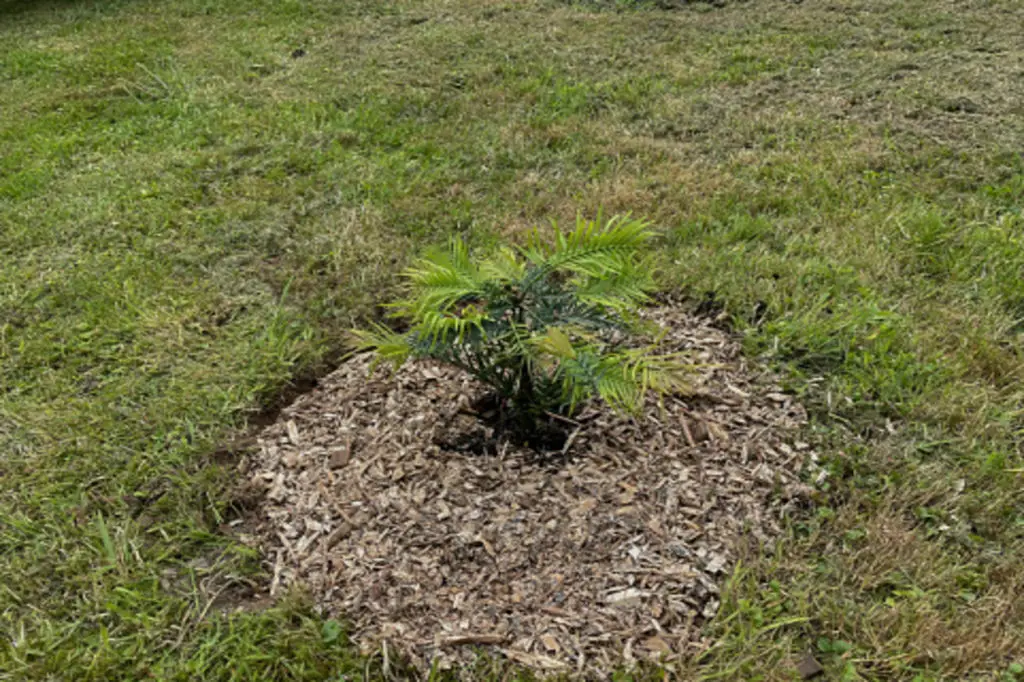When considering the mulching options for your gardening project, you could be confused about how to use a living mulch. Well, living mulch is a good alternative with a wide range of benefits for your garden.
A living mulch is a crop planted as a ground cover. You sow it after you’ve harvested the food crop or 5 weeks after the main crop has grown. The mulch stabilizes the soil moisture content and temperature, controls weeds, and prevents erosion. Though, if not used properly, it smothers the main crop.
Read on to learn the different types of living mulches, their benefits, and the factors you need to consider when using them in your garden.
Also Check: How To Clean Rubber Mulch
What Is A Living Mulch?
A living mulch can be described as a low-growing plant cultivated to limit weed competition around crops. It also shelters the soil around the crops, reduces evaporation, and minimizes soil erosion.
Living mulch can be planted around, beneath, or between harvestable crops. It may be composed of either a single plant species or various plants. The plants are planted around the crops together and grow to form a protective cover on the soil.
How To Use A Living Mulch
You use a living mulch by planting it after you have harvested your main crops. However, you can plant the mulch 5 weeks after your main crops have already been seeded and developed a solid foundation.
Ensure that your garden is debris and weed-free before planting the living mulch crops. The soil should be loose with good drainage and relatively fertile.
Broadcast your seeds or drill them into the soil at the recommended depth as per the seed packet. You can spread them into the ground between plant rows. The first few weeks provide the crop with steady moisture as it matures.
Usually, you decide whether you want the living mulch crops to complete their life cycle and decompose around your food plants. Or, you will till the plants into the soil, hastening their breaking down process.
Nonetheless, living mulch crops meant to serve as a ground cover can remain planted for many years. The mulch helps to retain soil moisture and suppress weeds.
Choosing Living Mulch Plants
Choosing living mulch depends on the purpose you require the mulch for, with some types helping break up soil and fix nitrogen. However, some plants act as a ground cover helping to suppress weeds, fill in land gaps, and conserve soil moisture.
Below are different types of living mulch plants:
Ground Cover Plants
Living mulch plants whose purpose is to be a ground cover should take foot traffic without getting destroyed. Crops such as creeping red fescue and wooly thyme are ideal for serving as a surface cover.
These mulches improve the soil and are attractive living carpets. Additionally, thyme protects other crops from certain pests.
Green Manure Plants
A mixture of legumes and non-legumes is ideal for green manure. Legumes help fix nitrogen which pairs well with the ability to add carbon by the non-legumes. When choosing a living mulch for vegetable gardens, a legume adds substantial nitrogen to help develop robust plants. Red clover is a legume and is quite appealing, making it an ideal choice.
At the end of its life cycle, you can till it to get green manure. The roots are great at breaking up and increasing the soil porosity while maintaining a hold on the topsoil in areas prone to erosion.
Other kinds of living mulch plants contribute in different ways to the health of your garden. A combination of grasses and legumes helps smother weeds keeping your garden weed-free. This combination is ideal for green manure.
Why? Because the legumes produce nitrogen and the grass increases the porosity of the soil and when you till it in as dried hay adds carbon.
Other Kinds Of Living Mulch Types
Some living mulch plants are natural pest enemies and can repel common pests and be a food crop. Such plants include basil, marigolds, onions, and garlic.
Buckwheat is a catch crop, meaning it matures very fast and is planted when the ground is uncultivated to add phosphorus to the soil.
Additionally, some living mulch crop’s role is to act as forage amid other plants. When choosing these plants, go for those with high nutrient content and easy palatability.
The Best Living Mulch Plants
You may be spoilt for choice when considering which living mulch to use. Some plant species offer great living mulch alternatives for your garden.
Experiment with a few species for a season or two to discover the ideal living mulch plant that suits your garden needs.
Some of the living mulch plants include:
- Annual clovers
Annual clovers are good living mulch, especially during the cool season. Ensure you mow the plants when using annual clovers before the fall.
- Alfalfa
Alfalfa is a legume species that work well in melon, winter squash patches, orchards, and vineyard rows. It must be turned deeply into the soil because of its perennial nature in warmer climates.
- Annual Ryegrass
Annual ryegrass is a great living mulch option if well contained. Don’t sow the seed too thickly into the soil to prevent uncontrolled growth. After mowing, leave the trimmings in the garden for an extra layer of soil cover.
Factors To Consider When Using Living Mulch
When not used properly, living mulch can smother your main crop. The following are the factors to consider when you plan to use living mulch:
- Climate and Season
Different climates and seasons dictate how you should use the living mulch. It’s advisable to adopt the mulch correctly to the weather conditions at hand. Plant a dense living mulch to help fully protect the soil during the hot season.
Nevertheless, space out your living mulch plants if the weather is cool or even wet to allow the crops to access sufficient sunshine and let excess moisture evaporate.
- Root Structure
You should consider the root structure of the living mulch plant and the adjacent crop. Different plants have different roots; some are deep and narrow, whereas others are fibrous and shallow.
Adjacent plants with different structures are more compatible since they won’t compete for nutrients. Deep-rooted plants get along fine with shallow-rooted crops.
Is Living Mulch Good For Plants
Living mulch has several beneficial effects such as:
- Weed Suppression
Living mulch helps to suppress weeds by competing with them if they’re planted before the wild plants start growing.
Some of the living mulch crops are allelopathic, inhibiting weeds’ growth. The plants store the allelopathic chemicals in their leaves which later drop and decompose, releasing these toxins which affect nearby wild plants.
Also, they may release these chemicals through their roots to the soil, which is then absorbed by other crops.
- Soil Improvement
Living mulch promotes soil improvement in various ways, including preventing degradation. The mulch also helps reduce the soil’s water runoff and erosion by offering a vegetative cover, whether by wind or water.
Additionally, it helps retain soil moisture, maintaining a steady moisture content that aids plants to thrive. Moreover, living mulch improves soil porosity and structure.
Living mulch helps promote soil biological activity by providing food and a conducive habitat for soil organisms.
Furthermore, living mulch helps to stabilize the temperature of the soil.
- Nutritional Benefits
Living mulch decomposes and releases nutrients absorbed by the plants, making them thrive. It prevents nutrients from leaching by stopping water runoff which might deprive your crops of the necessary nutrients required to grow.
Some living mulch plants also provide nitrogen to your crops.
- Reduce Pests And Diseases
Living mulch provides a habitat for insects and organisms, which helps to protect crops from pests. Some organisms help to repel plant pests and act as natural enemies.
The mulch also helps to reduce diseases that may affect your crops.
- Enhance Pollination
An additional benefit of living mulch is that it enhances pollination in gardens. The number of pollinators in your garden goes up and other insects are involved in the pollination process.
Living mulch provides habitat, pollen, and nectar to these pollinators and increases the pollinator diversity in your garden.
FAQS
Cons of Using Living Mulch
Living mulch competes with the main crop for nutrients, water, and light. It’s advisable to regularly mow when necessary to ensure that the mulch isn’t restricting the water and air movement around your vegetation crops.
Wrapping Up
A living mulch controls weed development, helps retain soil moisture, prevents erosion, and supports insects that aid in pollination. The discussion above shows how to use a living mulch.
You choose the living mulch you need depending on the purpose you need to use it for. Other factors to consider while selecting the mulch plants are the weather conditions and the root structure of the adjacent vegetation crops.
Living mulch offers additional benefits to the plants, such as repelling some vegetation pests. Also, it fixes nitrogen helping in growing solid plants.
Nonetheless, it’s advisable to appropriately use the living mulch lest you end up smothering your main crop.


